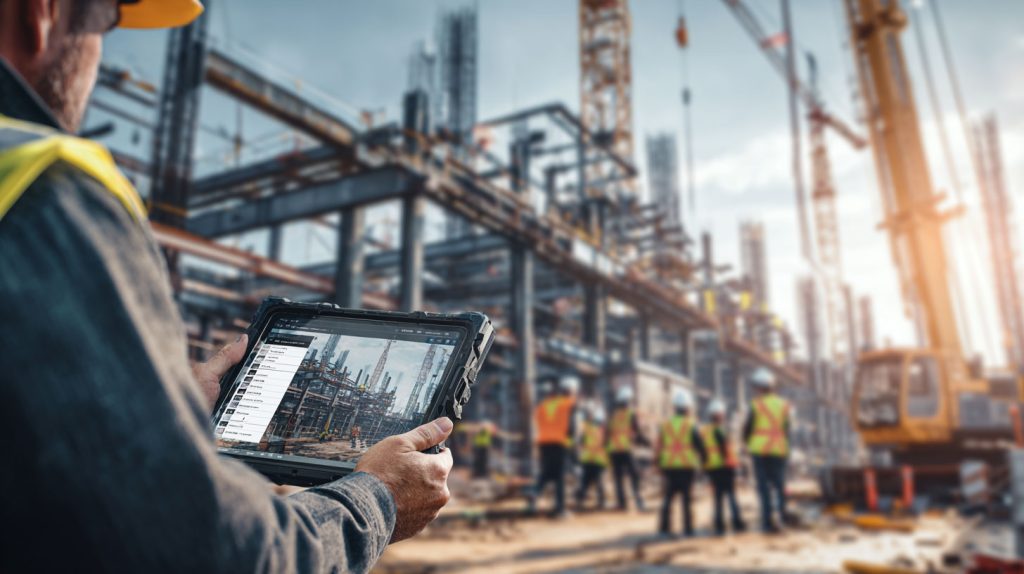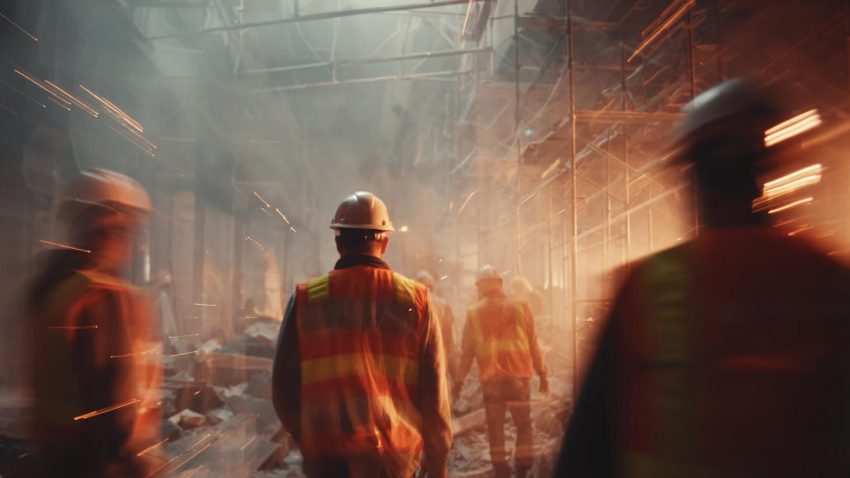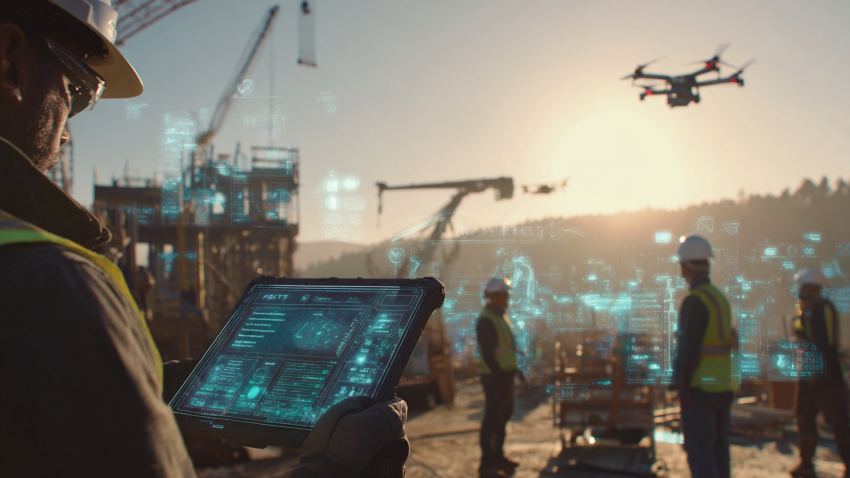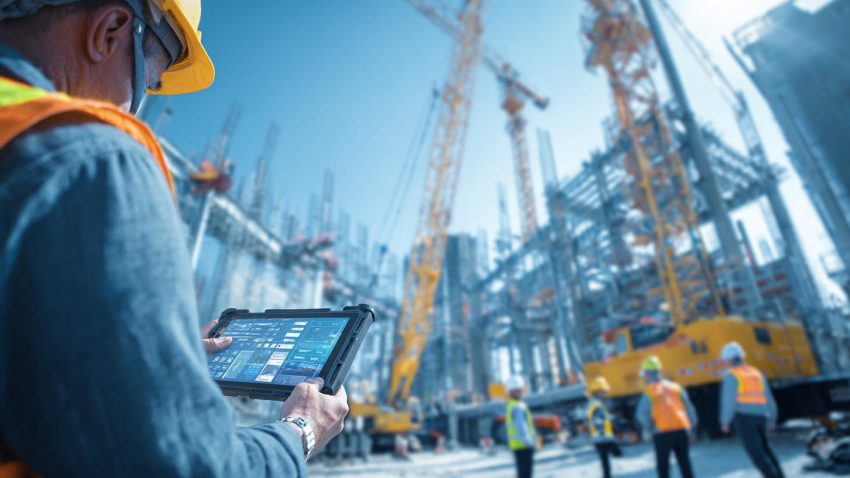AI-Assisted Hazard Identification: How Smart Job Hazard Analysis (JHA) Dashboards Improve Construction Safety and Audit Readiness
Table of Contents:
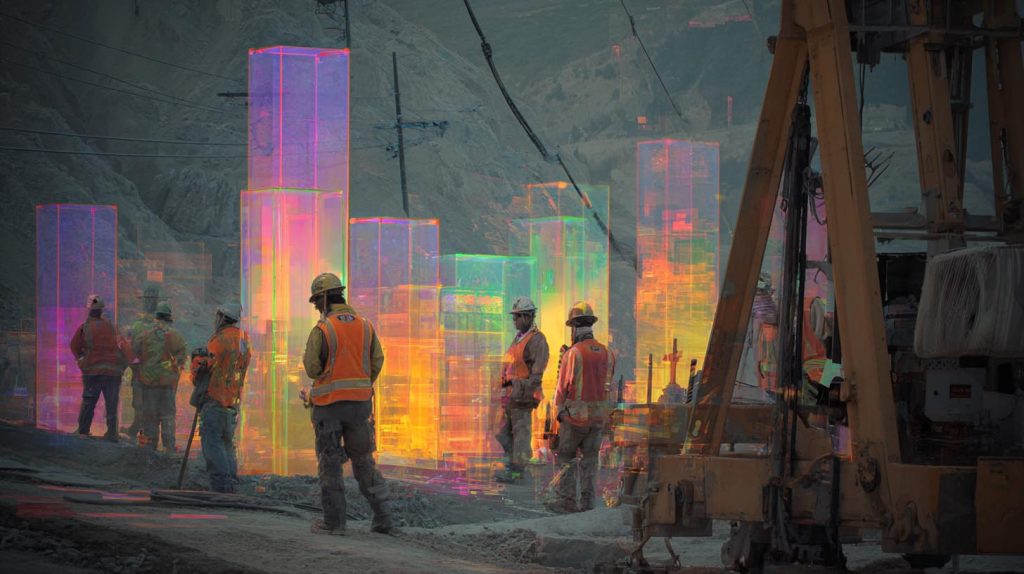
Construction sites are dynamic environments where conditions, crews, and risks can shift by the hour. Traditional Job Hazard Analyses (JHAs) help identify hazards before work begins—but in today’s fast-paced projects, static forms can’t always keep up with real-time changes. That’s where AI-assisted hazard identification and smart safety dashboards are transforming the game. These systems use data analytics, pattern recognition, and predictive insights to help superintendents spot risks before they become incidents.
Artificial intelligence doesn’t replace human judgment—it enhances it. AI-powered JHA dashboards learn from historical safety data, field reports, and environmental inputs to flag potential hazards that might otherwise go unnoticed. The result is a proactive safety culture that aligns perfectly with OSHA expectations for continuous improvement and hazard control verification.
In this article, we’ll explore how AI-assisted JHA systems improve hazard detection, streamline documentation, and prepare teams for faster, more accurate safety audits. You’ll see how data-driven dashboards are helping contractors move from reactive compliance to intelligent prevention—while keeping every worker safer on site.
How AI-Assisted JHAs Identify Hazards Before They Happen
Traditional JHAs rely heavily on supervisor experience and manual observation. AI-assisted JHAs, on the other hand, analyze multiple data streams simultaneously—weather, task history, crew performance, and even material delivery logs—to predict which activities pose elevated risks. For example, if crane operations overlap with high winds or nearby trades, an AI-driven dashboard can alert the superintendent before the first lift.
These predictive insights allow teams to update controls in real time. Instead of reacting after an incident, safety managers can intervene early, adjust workflows, or reassign crews. The AI doesn’t eliminate human decision-making—it amplifies awareness, providing early warnings that align with actual jobsite dynamics.
Top Benefits
- Predicts potential hazards based on real-time and historical data
- Reduces reactive safety management through proactive alerts
- Enhances audit readiness with automatically logged recommendations
Best Practices
- Train supervisors to interpret AI alerts as guidance, not replacement for field observation
- Calibrate AI tools with local site data to improve accuracy over time
- Integrate weather APIs and equipment logs for richer hazard insights
Q&A Mini Section
Q: How does AI identify potential hazards?
A: It analyzes multiple data sources—weather, equipment use, prior incidents—to detect high-risk conditions early.
Q: Can AI fully replace human hazard assessments?
A: No. It supports, not replaces, field expertise by flagging risks humans may miss.
Q: Does this technology require constant internet access?
A: Most systems cache data locally and sync automatically once connected.
AI-assisted JHAs make construction safety more predictive, giving teams time to act before risks escalate into costly incidents or audit findings.

Connecting JHA Dashboards to Field Data for Smarter Decision-Making
AI safety dashboards thrive on context. When integrated with real-time field data—like daily reports, material deliveries, or equipment usage—they paint a comprehensive picture of what’s happening across the site. Every hazard alert is tied to a specific location, crew, and task, allowing superintendents to make targeted safety decisions instead of blanket precautions.
Dashboards can also visualize performance trends over time. Supervisors can compare daily JHA compliance rates, track corrective actions, and measure which control measures have the highest success rate. This data transparency not only improves internal safety management but also simplifies OSHA or owner audits—where evidence of consistent monitoring often carries more weight than paperwork volume.
Top Benefits
- Provides unified visibility across JHAs, tasks, and field activities
- Helps prioritize safety actions through real-time data visualization
- Simplifies audit reporting with automatically generated compliance summaries
Best Practices
- Sync JHA dashboards with project management tools for consistent data flow
- Assign each hazard alert a responsible party for faster resolution
- Use analytics dashboards to track improvements by trade or work zone
Q&A Mini Section
Q: How do AI dashboards connect to field systems?
A: Through integrations with digital JHA, scheduling, and reporting platforms.
Q: What data is most useful for AI hazard analysis?
A: Task timing, crew assignments, weather data, and historical safety performance.
Q: Can small contractors use connected dashboards affordably?
A: Yes—cloud-based solutions scale by project size and user count.
By linking real-time field data with JHA dashboards, contractors gain complete visibility into safety performance—transforming audits from reactive evaluations into demonstrations of control and foresight.
Improving Safety Audits with AI-Generated Insights
Safety audits often hinge on two things: documentation quality and consistency. AI simplifies both. Instead of manually compiling records, smart dashboards automatically log every JHA update, signature, and hazard mitigation step. This digital trail becomes a transparent audit-ready history of your project’s safety decisions.
AI can also generate audit summaries automatically—highlighting compliance trends, completed forms, overdue reviews, and recurring hazard categories. When auditors arrive, superintendents can display interactive dashboards instead of flipping through binders. This not only saves hours but demonstrates a commitment to continuous safety improvement backed by data.
Top Benefits
- Automatically generates OSHA-ready safety audit summaries
- Increases transparency and credibility during inspections
- Identifies compliance gaps early through pattern recognition
Best Practices
- Run automated audit simulations monthly to verify documentation accuracy
- Use AI dashboards to analyze recurring hazards and update training programs
- Keep digital audit reports synced to cloud storage for instant retrieval
Q&A Mini Section
Q: How does AI simplify audit prep?
A: It compiles records automatically and flags missing reviews or signatures in advance.
Q: Are AI-generated audit reports accepted by owners or regulators?
A: Yes, as long as they include verifiable timestamps and digital signatures.
Q: Can AI predict what auditors will focus on?
A: Many platforms highlight sections commonly scrutinized based on prior audits or OSHA data.
When used strategically, AI transforms safety audits from reactive reviews into proactive validations of your company’s safety culture.
Using Crew Feedback to Train AI and Improve Hazard Detection Accuracy
AI learns best from real-world experience — and no one knows the jobsite better than the crew doing the work. When digital JHA dashboards capture feedback directly from field teams, the system continuously refines its hazard recognition accuracy. Each time a superintendent or crew member flags a near miss, adds a photo, or corrects a false hazard alert, the algorithm adjusts its predictive model. Over time, the AI becomes more attuned to your company’s specific workflows and site conditions.
This kind of collaborative AI training closes the loop between technology and field reality. Crews see that their input matters, and supervisors get smarter alerts that better reflect how the work is actually performed. When an auditor reviews the record, they see not just hazard logs but an evolving, feedback-driven system of safety intelligence.
Top Benefits
- Improves AI accuracy through ongoing crew input and field validation
- Strengthens engagement by showing workers their insights shape safer jobsites
- Creates a documented history of collaborative learning for audits and owners
Best Practices
- Encourage foremen to submit digital notes or photos directly into the dashboard
- Review false-positive alerts weekly to help fine-tune AI models
- Use crew meetings to discuss how AI recommendations match field realities
Q&A Mini Section
Q: How does crew feedback improve AI predictions?
A: It teaches the system which hazards are truly relevant, refining future alerts.
Q: Will AI ever fully replace human observation?
A: No — it’s a learning tool that depends on human experience to stay accurate.
Q: How can feedback be documented for audits?
A: All submissions and AI adjustments are timestamped within the dashboard for verification.
When the workforce becomes part of the AI training loop, safety becomes both human-centered and data-enhanced — a blend that auditors recognize as true innovation.
Automating Hazard Tracking and Notifications Across Projects
Automation is where AI-driven JHAs truly shine. Instead of relying on manual check-ins or endless follow-ups, smart dashboards automatically track open hazards, overdue reviews, and incomplete signatures. Supervisors receive alerts when corrective actions are required, while project managers can see site-wide compliance in one view.
This automated oversight reduces administrative burden while maintaining continuous compliance. It also prevents hazards from slipping through unnoticed — every item logged, every update recorded, every review verified. When a contractor operates across multiple job sites, automation ensures consistency, allowing leadership to compare risk exposure and response times across projects.
Top Benefits
- Eliminates manual follow-ups through automated hazard alerts
- Ensures consistent compliance across multiple job sites
- Reduces response time for corrective actions and safety approvals
Best Practices
- Set automated notifications for unreviewed JHAs or unresolved hazards
- Use escalation rules that notify higher-level managers for overdue actions
- Review system-generated compliance reports weekly to identify lagging trades
Q&A Mini Section
Q: How does automation help large contractors?
A: It standardizes safety monitoring across projects and ensures consistent enforcement.
Q: Can alerts be customized by project or trade?
A: Yes, most systems allow role-based filters for relevant notifications.
Q: Does automation replace the safety manager’s role?
A: No — it frees managers to focus on field improvement rather than chasing paperwork.
Automation ensures that no hazard, report, or audit item is ever overlooked — keeping teams compliant and projects running safely at scale.
Using Predictive Analytics to Improve Future JHAs
AI doesn’t just track current hazards — it learns from them. Predictive analytics tools analyze patterns from thousands of JHAs to forecast where future incidents might occur. If certain hazards consistently appear in specific work types or under certain conditions, the system can preemptively recommend control measures before the next phase begins.
For instance, predictive JHA dashboards might detect that electrical work in tight spaces produces recurring PPE violations or that crane lifts above certain wind speeds correlate with delays and near misses. This intelligence allows project teams to plan ahead, improving both safety and productivity. Predictive analytics also help safety managers justify investments — turning safety performance into measurable business data.
Top Benefits
- Identifies recurring hazards before they reappear on future projects
- Enables proactive safety planning using data-driven insights
- Converts safety records into measurable performance metrics
Best Practices
- Run quarterly analytics reports to evaluate leading indicators of risk
- Use predictive data to guide preconstruction safety planning meetings
- Share trend reports with owners to demonstrate safety improvement over time
Q&A Mini Section
Q: What’s the difference between real-time and predictive analytics?
A: Real-time analytics show what’s happening now; predictive analytics forecast what’s likely next.
Q: How far back should data be analyzed?
A: At least one year to reveal seasonal or recurring hazard patterns.
Q: Can predictive analytics influence design or scheduling decisions?
A: Yes — planners can modify methods or timing to reduce expected risks.
Predictive analytics elevate safety from reactive correction to strategic foresight — transforming JHAs into living, learning systems for smarter risk management.
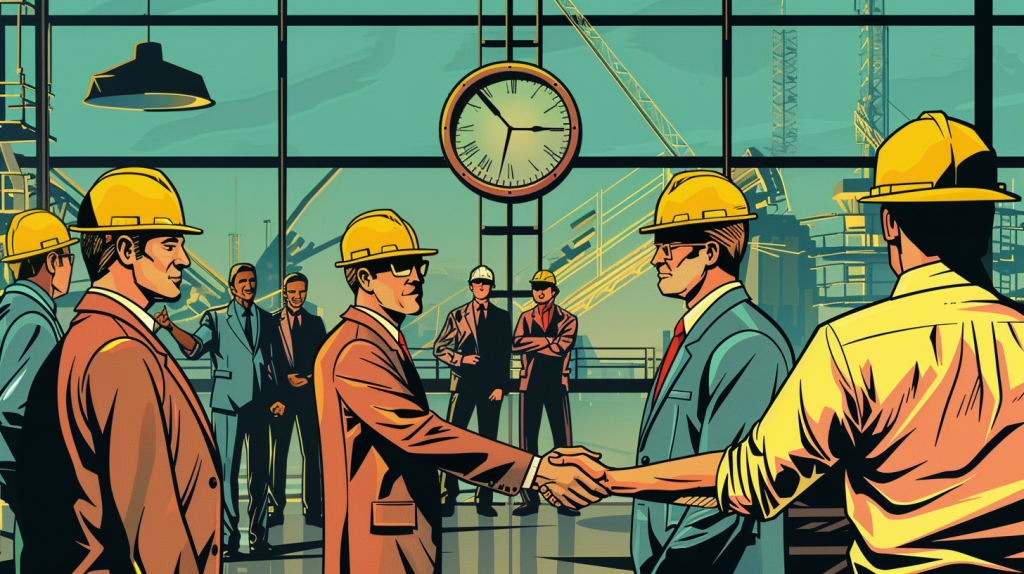
StruxHub
Discover how StruxHub can revolutionize your construction management. Contact us today!
How StruxHub Helps Contractors Implement AI-Driven JHA Dashboards
StruxHub gives construction teams the digital foundation to bring AI-powered safety management to life. Its integrated JHA dashboard combines automation, analytics, and mobile accessibility so that superintendents can identify, assign, and track hazards directly from the field. Every update is timestamped, logged, and accessible in real time — perfect for owners, auditors, and compliance officers.
The platform’s upcoming AI-assisted features take this further by learning from project history and user behavior. StruxHub can automatically recommend controls for common hazards, flag incomplete JHAs, and suggest areas that may require retraining or inspection. When paired with existing modules like Pre-Task Plans and Daily Reports, it creates a unified ecosystem where safety data connects seamlessly with project operations.
Top Benefits
- Centralized AI-driven safety dashboards that track compliance in real time
- Predictive insights to help identify recurring hazards and training needs
- Streamlined audit readiness with searchable, timestamped documentation
Best Practices
- Use StruxHub’s analytics tools to compare JHA completion rates by project
- Encourage crews to submit hazard feedback directly from mobile devices
- Review weekly dashboards to verify safety trends and training impact
Q&A Mini Section
Q: How does StruxHub integrate AI into existing workflows?
A: It uses data from JHAs, reports, and schedules to generate actionable safety insights automatically.
Q: Can StruxHub be customized for different company safety programs?
A: Yes, templates, dashboards, and AI recommendations can all be tailored by role or trade.
Q: What makes StruxHub ideal for audit preparation?
A: Every record is organized, timestamped, and verifiable — ensuring total transparency during inspections.
StruxHub empowers contractors to embrace AI safely and effectively — turning data into daily safety awareness and making compliance smarter, faster, and easier to prove.

FAQ: AI-Assisted Job Hazard Analysis (JHA) Dashboards and Construction Safety
1. How does AI improve the accuracy of Job Hazard Analyses (JHAs) on construction sites?
AI improves JHA accuracy by analyzing large volumes of project data—such as past incident reports, weather conditions, crew activity, and equipment logs—to identify patterns that predict potential hazards. Instead of relying solely on human observation, AI systems detect subtle risk factors that supervisors might miss, like fatigue indicators, repetitive strain potential, or overlapping task conflicts. These systems continuously learn from feedback, refining predictions over time to become more site-specific and precise. For contractors, this means fewer oversights, more consistent safety controls, and stronger compliance documentation. When paired with digital dashboards, AI creates a living safety model that adapts to changing conditions, helping superintendents address risks before they occur and giving auditors clear, data-backed evidence of proactive management.
2. Can AI replace traditional safety inspections or human oversight?
Not entirely—and it shouldn’t. AI is a support system, not a substitute for professional judgment. It identifies potential hazards faster and with greater consistency, but field supervisors still validate and act on the information. Think of AI as a second set of eyes: it enhances situational awareness and provides predictive insights, but final responsibility remains with humans. OSHA and industry standards still require human verification of controls and field conditions. The most successful contractors use AI to handle repetitive or data-heavy tasks—like trend analysis, record comparison, and alert generation—so safety managers can focus on training, field inspections, and communication. When both work together, the result is a balanced, high-efficiency safety program grounded in human expertise but powered by smart technology.
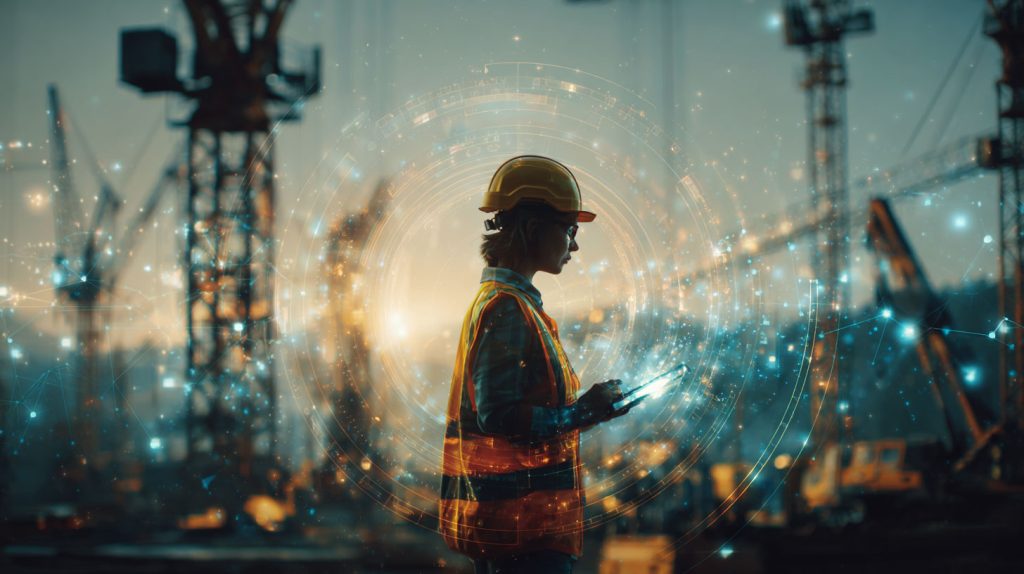
StruxHub
Experience the power of StruxHub today and witness firsthand how it can revolutionize your construction operations.
3. What features should contractors look for in AI-powered JHA dashboards?
Look for dashboards that combine automation, analytics, and integration. Essential features include real-time alerts for hazard trends, predictive analytics for future risk forecasting, and integration with scheduling or reporting systems. A good dashboard should also log all activity with timestamps and digital signatures for audit verification. Mobile accessibility is critical so supervisors can review hazards and controls on-site, while cloud storage ensures nothing gets lost between teams. Some advanced systems even include natural language processing (NLP) for reading text-based safety notes and converting them into structured data. For audit readiness, ensure the platform can export reports that summarize JHA completion rates, incident frequency, and safety trends—all with just a few clicks.
4. How does AI-assisted safety improve OSHA compliance and audit readiness?
AI systems don’t just make safety smarter—they make compliance simpler. By automatically documenting every hazard identification, control update, and worker acknowledgment, AI dashboards provide a complete digital audit trail. During inspections, superintendents can instantly retrieve verified JHA records with timestamps and photos, eliminating the guesswork of manual forms. Predictive analytics also help teams identify recurring hazards before they result in citations, demonstrating proactive hazard control. OSHA auditors appreciate transparency, and AI systems make that easy by presenting data visually and clearly. Instead of reviewing piles of paperwork, inspectors see real-time dashboards showing compliance rates, corrective actions, and continuous improvement logs—all verifiable and traceable to field activity.
5. How does StruxHub help construction teams adopt AI-assisted hazard identification effectively?
StruxHub is designed to make AI adoption seamless for contractors and superintendents. It integrates safety data from JHAs, Pre-Task Plans, and Daily Reports into a single intelligent dashboard. The platform’s AI engine learns from historical project data and field inputs to detect potential risks and recommend hazard controls before incidents occur. It also automates reminders, reviews, and crew sign-offs—ensuring that compliance doesn’t depend on manual follow-up. For audit readiness, StruxHub provides timestamped records and exportable reports that meet OSHA and owner standards. As contractors grow more data-driven, StruxHub evolves alongside them, giving safety managers predictive insight without disrupting their existing workflows. It bridges the gap between human expertise and digital intelligence—keeping every crew safer and every audit simpler.
StruxHub
Discover how StruxHub can revolutionize your construction management. Contact us today!
Related Pillar Articles:
Best Guide to Construction Logistics Plans (CLPs): What Owners Want to See Before Work Starts
